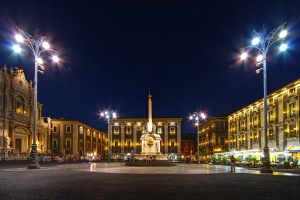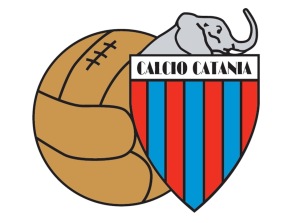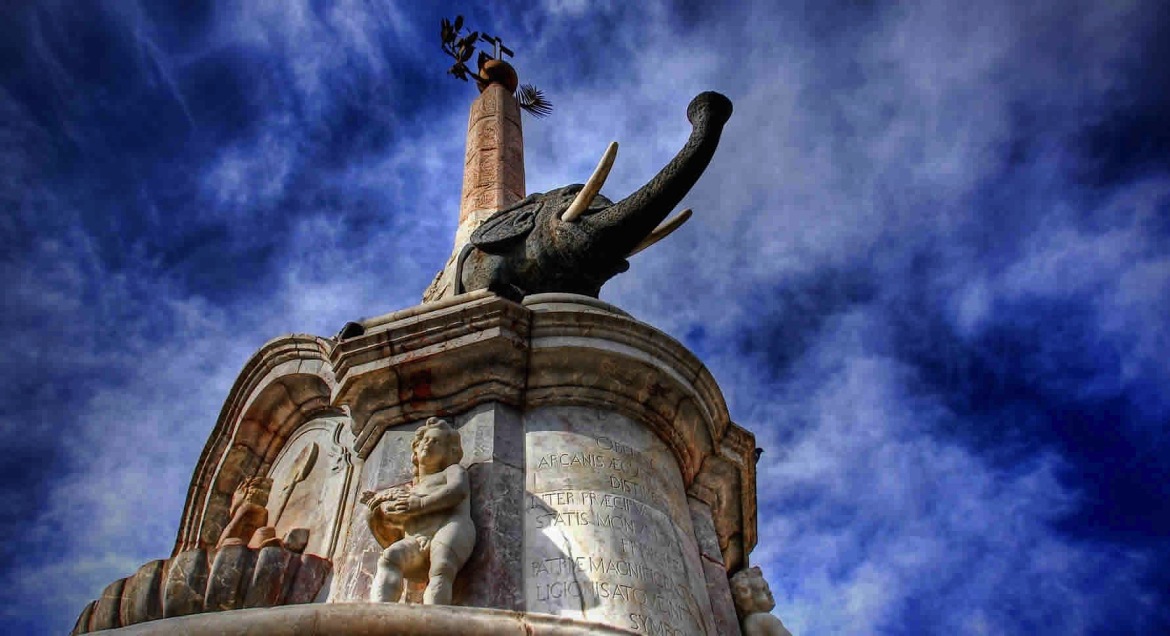City of the Elephant
On the east coast of Sicily overlooking the vastness of the Mediterranean sits Catania. It’s an ancient city with an immense historic center of twisting lanes and a legacy stretching back thousands of years. In the middle of all this sits the heart of the town: Piazza del Duomo. Centered in the middle of this large public square is a curious monument, which is as much a puzzle for tourist as it is a source of pride for locals. Sitting on a marble pedestal is the sculpture of a smiling elephant formed from centuries old volcanic rock. On its back it supports an Egyptian obelisk, brought to Sicily from the city of Syene in Egypt during the time of the Roman Empire. In this installment of Honestly Italy, we will investigate the meaning behind this curious monument and what it means to the people living along this coast of the Mediterranean. Welcome to Catania. Welcome to the City of the Elephant.

The thought of elephants associated with Sicily might sound a bit strange but although there are no animals of that type currently wandering around the island, the legacy of elephants and Catania stretches back thousands of years. Towards the end of the last great Ice Age, with sea levels at an all time low, islands in the Mediterranean were connected by short-lived land bridges. Across these land bridges, herds of animals (including elephants) wandered onto the establishing islands of Sardinia, Sicily, Malta, Crete and Cyprus. As the centuries past, many exotic species became extinct due to the changing climate and resources. The elephants of the Mediterranean would stick around though and evolve into ‘dwarf elephants’, which is evidenced by the plethora of post-Ice Age elephant fossils found on each major Mediterranean island including Sicily.
The story of these elephants begins to blend into the early stages of Catania around the dawn of the Iron Age when a tribe of Sicels (ancient peoples from Sicily) founded a city on the eastern shore of the island. They called it Katana, which later transformed into Catina and still later Catania from the Latin term catinus meaning ‘place by the bay.’ The founding legends of the city tell the tale of a people struggling to expand their city while being besieged by packs of ravenous wild animals and marauding tribes from other parts of the island. The story goes that faced with these enemies a pack of local elephants continually chased off any danger so that the inhabitants of ancient Catania could grow their city in peace. The archeological evidence is unclear on whether the earliest inhabitants in this part of Mediterranean even came in contact with this species or whether the packs of elephants inhabiting the island were extinct well before the founding of prehistoric Catania.
Despite this uncertainty, the legend of the elephants grew over the centuries, with additional legends growing on top of the original. So much so, that when Muslims invaded, founded and controlled the island of Sicily from 831 to 1072 AD, the city of Catania was labeled on maps from that time as Balad-Al-Fit or Medinat-Al-Fit meaning the City of the Elephant.
The elephant grew into the symbol of Catania even more over the coming centuries. To the point when in 1735, Giovanni Battista Vaccarini constructed a centerpiece to Piazza del Duomo out of an ancient statue and an Egyptian obelisk symbolizing the cities origins as well as its ancient cultural reach. Today, water still runs at the base of the structure and it is proudly called Fontana dell’Elefante after the symbol fixed atop it.

You can also see the sign of the elephant in many forms throughout the city from pictures on restaurants, to the names of palaces and public buildings. Even the professional soccer team Calcio Catania has a little elephant peaking out from the top of their badge. The animal is not only a symbol of Catania’s reliance and ancient roots but also the ties that bind this beautiful city together.

3 Comments
Fascinating and enlightening. Thank you.
Awesome post! Keep up the great work! 🙂
Great content! Super high-quality! Keep it up! 🙂